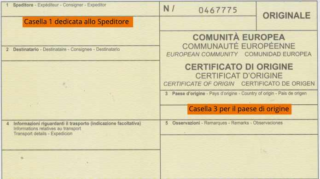Saffron is a precious spice, known since ancient times; the Romans used it as a dye and in miniatures often replaced gold; it also had a cosmetic use, in fact it was used to dye hair, nails, lips and skins. Also for the staining of the stained glass windows of the cathedral of Milan saffron was used, which has since entered the culinary tradition of Milan with the famous risotto.
In Morocco the cultivation of saffron occupies small areas in Debdou but it is in Taliouine, a mountain village of the Atlas, at 1,200 meters of altitude, connected to the rest of the world by the hill of Tizi n’ Test, which is located excellence worldwide. There are no particular varieties, but the one produced on the plateau, thanks to the favorable combination of soil and congenial climatic conditions, combined with the centuries-old experience of the producers, is said to be even more valuable than the others, with a less bright color but a more intense scent and flavor.
Saffron belongs to the crocus family and the flower has a characteristic violet/lilac colour, inside which are the red pistils from which is obtained the spice native to Asia.
The flowers are collected at dawn, when they are still closed, in order to avoid the strong rays of the sun deteriorating them, impoverishing them of their natural properties.
The harvest is done strictly by hand because the flowers are extremely delicate and generally it is the women who take care of them. After collection, the stigmas must be separated from the corolla, another operation exclusively by hand. To obtain a kilogram of saffron you need 180,000 flowers, an enormity!
This small crocus, whose pistils provide the precious spice, has crossed the centuries thanks to its medicinal virtues and its coloring power. In saffron there are 5 types of dyes, all carotenoid based that have the rare particularity of being soluble in water and therefore usable as dyes.
It also has 35 different aromas and the most characteristic, the one we all know, develops during the drying phase. The bulbs rest until August and begin to produce their first leaves, then the flowers. In these weeks will begin the collection, a show of unique color and unforgettable, which repaints the superb landscapes of Siroua.
The second specificity of saffron is its culture, dormant until the end of summer and autumn harvest. It needs sun, rain and light equal to that of the vineyards. This rustic bulb is planted at an altitude ranging from 650 to 1,200 meters and can withstand up to -15 , – and over 40 , – above. The harvest is concentrated on a duration of two to three hours per day, to avoid the pistils being heated by the sun, here still burning. This would cause premature fermentation which would compromise the quality of saffron. After harvesting, saffron is dried in dark rooms or on fire.
The air drying, practiced in Morocco, gives the product an exceptional quality at the expense of the quantity that can result from heat nuisance, as is the case in Europe. During this operation the specific weight will be reduced by 80%. It can be kept up to three years in good condition, in a dry environment and away from the light.
The price varies, depending on the quality, between 4 and 6 euros per gram. The color must be switched on and touching the filaments will dirty your fingers. In Marrakech, in the souk of spices or in the place des épices, you can still find saffron of excellent quality, almost impossible to find in Europe.
Nutritional properties
In 10 g of saffron, the spice provides about 31 calories, 6.5 g of carbohydrates, 1 g of protein, 0.6 g of fat and 0.4 g of fiber. In addition to omega 3 and 6, B vitamins and minerals, especially manganese, saffron contains phytocompounds.
Considered the “king of antioxidants” because it has anti-inflammatory, neuroendocrine and neuroprotective capabilities, it is often compared to antidepressant drugs. However, do not exceed the doses of the ingredient established because a quantity over 1 gram is toxic, with nausea and headache.
In the kitchen, you must add the spice to the preparations at the end of cooking, not to alter it. In fact, the stigmas must be previously left to soak in a hot liquid, at 50 º C, for about 40 minutes. In fact, the right dose of saffron is “a knife tip”, corresponding, for a risotto, to 0.25 g of powder or 15 stigmas. It goes well with delicate foods such as ricotta, crustaceans and molluscs and chocolate.




